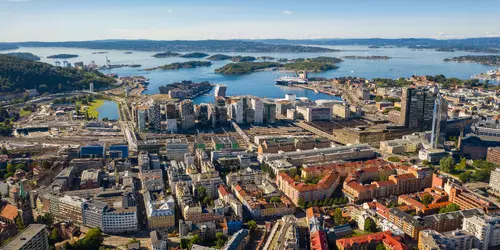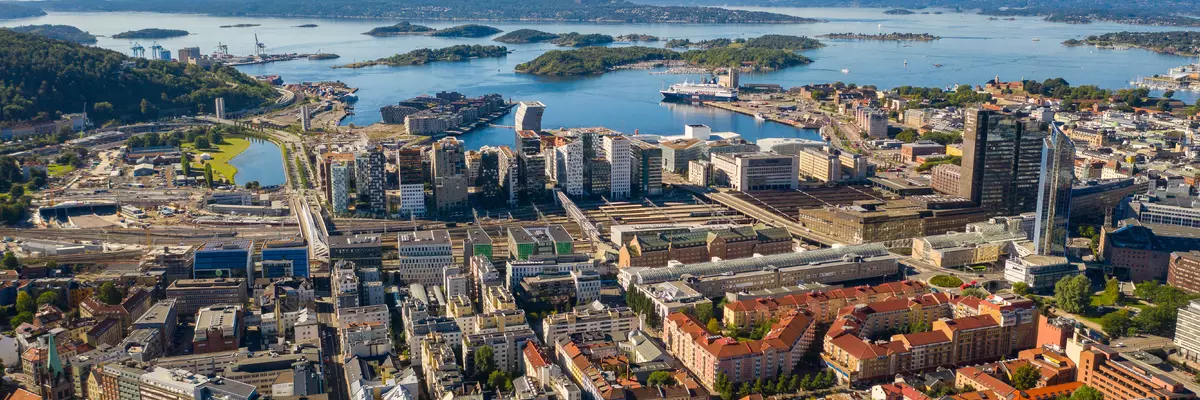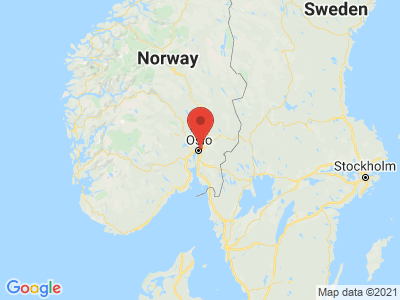Climate Table Oslo
Jan | Feb | Mar | Apr | May | Jun | Jul | Aug | Sep | Oct | Nov | Dec | |
|---|---|---|---|---|---|---|---|---|---|---|---|---|
| Max. Temperature | -2° | -1° | 4° | 10° | 16° | 20° | 22° | 21° | 16° | 9° | 3° | 0° |
| Min. Temperature | -7° | -7° | -4° | 1° | 6° | 10° | 13° | 12° | 8° | 3° | -1° | -4° |
| Sun Hours | 1 | 3 | 4 | 6 | 7 | 8 | 8 | 7 | 5 | 3 | 2 | 1 |
| Water Temperature | 3° | 2° | 3° | 5° | 9° | 13° | 16° | 17° | 15° | 11° | 7° | 5° |
| Rain Days | 10 | 7 | 9 | 7 | 8 | 10 | 11 | 10 | 11 | 11 | 10 | 9 |
The climate year of Oslo
Oslo, the capital of the Kingdom of Norway, is located at the head of the Oslofjord, surrounded by forests and mountains. The Oslo metropolitan area is home to about 1/3 of the population of Norway - that's about 1.5 million people. Forest and water cover almost 2/3 of the city area with 343 lakes and 40 islands. Due to its location on the fjord, Oslo has a maritime-humid to continental climate. In summer Oslo is sunny and pleasantly warm, late summer brings rain, winter a lot of snow. On the slightly higher edges of the city there is still snow in the spring, although in the interior of the city spring is already announcing itself and this can be up to 10°C different temperatures. Oslo Winter Park is still within the city and can be reached by subway or ski bus in 30 minutes. There are 18 trails, 11 lifts, slopes for children and beginners, snowboard runs and a half pipe. Skiing and big city life is possible here in the capital Oslo from November to April.
General information about Oslo
The Oslo traveler is offered many natural and architectural sights. Already the location at the fjords is for photographers and nature lovers something that is not often to see. The medieval old town of Oslo is worth a visit, the castle of the royal family and the fortress Akershus (Akershus slott og festning). The Opera in the Bjørvika district was opened in 2008 and is 110 meters wide, 207 meters long with an area of 38,500 square meters. It is the largest cultural project in Norway and can be visited either alone or with a guided tour. The outdoor area, the roof accessible via a sloping staircase and the foyer are open to everyone.
The ski jump at Holmenkollen is also worth a visit, especially since a glass elevator takes guests up to the jump tower. In good weather, the view over Oslo is magnificent. The huge City Hall with its two towers is located at the end of the Pipervika harbor basin between Aker Brygge and Akershus Festning. The Klokkespill, (carillon) with 49 bells plays international or Norwegian pieces 18 times a day. The town hall is significant for the whole world every year on December 10, the anniversary of the death of Alfred Nobel. Then the Norwegian royal family and state guests gather here to award the Nobel Prize.
Tourism Oslo
The rainy days in Oslo are distributed quite evenly throughout the year, the least amount of rain falls in February and the months of August and September with an average of 90 mm of rain each are the rainiest. The fewest sunny days are in February and April, and the most sunny days are in July, September and October. The shortest sunshine duration is in December with about 1 hour per day and the longest in June with about 8 hours of sunshine.
In Oslo spring usually lasts from April to May, summer from June to August, September and October is autumn and winter lasts the longest - from November to March. The warmest temperatures are in July and the coldest in January. For the water sportsman, August is the month with the highest water temperatures in Oslofjord and February with the coldest water temperatures.


